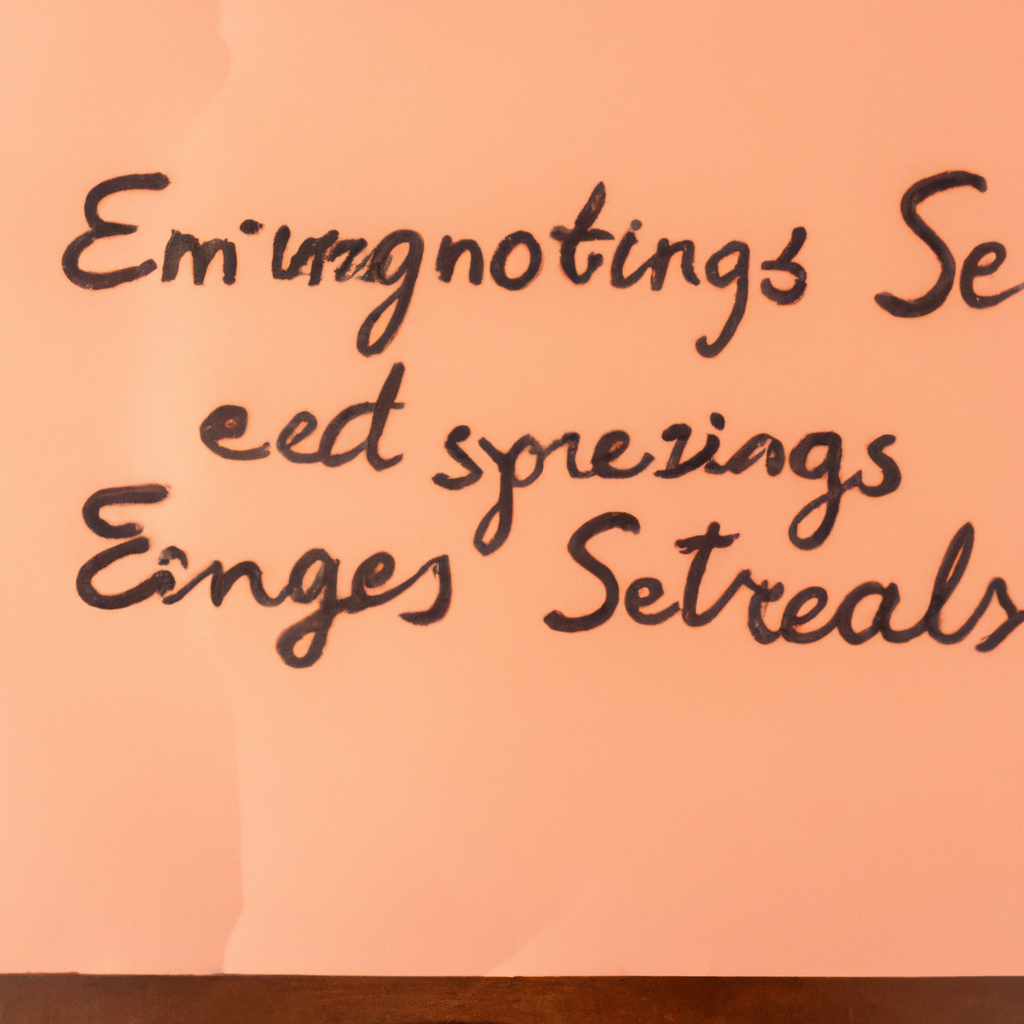In a world filled with uncertainty, stress has become an unwelcome companion in our lives. It lurks around every corner, patiently waiting to pounce, leaving us feeling helpless and vulnerable. And when stress strikes, it often brings along an unwanted partner: emotional eating. Yes, those cravings that grip us during times of distress, whispering seductive promises of comfort and relief. But fear not, for in the realm of emotional eating, strategies abound to help us regain control and curb those stress-induced cravings. So let us embark on a journey together, as we explore the depths of our emotions and discover the tools and techniques that will empower us to triumph over the hunger-driven battles of our minds and souls.
1. “Delving into the Depths of Emotional Eating: A Journey of Understanding”
Emotional eating is a complex subject that has captivated researchers and individuals alike. It’s an intricate web of emotions and behaviors that often goes unnoticed. Delving into the depths of emotional eating requires both empathy and understanding.
At its core, emotional eating is the tendency to turn to food for solace or comfort during times of heightened emotions. Whether it’s a stressful day at work, a breakup, or simply feeling overwhelmed, many of us have experienced the allure of a pint of ice cream or a bag of chips.
This journey of understanding invites us to explore the underlying reasons behind emotional eating. Each person’s experience is unique, and it’s crucial to remember that emotional eating is not simply a matter of lacking willpower or self-control.
One key aspect of emotional eating is the emotional triggers that prompt these behaviors. Identifying these triggers can provide valuable insights into our emotional landscape. It could be loneliness, boredom, or even certain negative emotions like sadness or anger. Being aware of these triggers allows us to develop healthier coping mechanisms to break the cycle.
Unearthing the reasons behind emotional eating can be a transformative process. It often brings deep-rooted emotions and patterns to the surface, which can be addressed through therapy, support groups, or self-reflection. Understanding the psychology behind emotional eating empowers individuals to regain control over their relationship with food, fostering a healthier mindset and lifestyle.
2. “Unveiling Stress-Induced Cravings: How to Break Free from the Cycle”
Stress can be a powerful trigger for cravings, leading us to seek comfort and relief in unhealthy ways. Whether it’s reaching for a sugary snack or craving a cigarette, stress-induced cravings can create a vicious cycle that’s difficult to break free from. But fear not, because we’ve got the solutions for you!
Identify the Triggers: The first step in overcoming stress-induced cravings is to identify the triggers that set them off. Is it a demanding work environment? Relationship troubles? Once you pinpoint the primary stressors, you can begin finding healthier ways to cope.
Find Alternatives: Instead of reaching for that chocolate bar or lighting up a cigarette, explore healthier alternatives that can provide relief from stress. This could be anything from taking a walk in nature, practicing deep breathing exercises, or engaging in a hobby you enjoy. By finding new ways to channel your stress, you can break free from the cycle of unhealthy cravings.
Manage Stress Levels: One of the most effective ways to combat stress-induced cravings is by managing your stress levels. This can include regular exercise, getting enough sleep, and practicing mindfulness or meditation. Implementing stress management techniques into your daily routine will not only help alleviate cravings but also improve your overall well-being.
Build a Support System: Breaking free from stress-induced cravings can be challenging on your own, so don’t hesitate to reach out for support. Surround yourself with friends and family who understand your goals and can provide encouragement along the way. Additionally, joining support groups or seeking professional help can greatly increase your chances of success in breaking free from the cycle.
Practice Self-Care: Taking care of yourself is crucial when trying to break free from stress-induced cravings. Make sure you’re fueling your body with nutritious meals, staying hydrated, and getting enough rest. Treat yourself to a relaxing bath, indulge in your favorite hobbies, and remember to practice self-compassion. By prioritizing self-care, you’ll be better equipped to handle stress and prevent those tempting cravings from taking hold.
3. “Empowering Strategies to Tame the Beast of Emotional Eating”
In this section, we will delve into some empowering strategies that can help you overcome the challenges of emotional eating. These strategies are designed to empower you and give you control over your eating habits, allowing you to tame the beast of emotional eating.
The Power of Mindfulness
Mindfulness is a powerful tool that can help you become more aware of your emotions and the triggers that lead to emotional eating. By practicing mindfulness, you can learn to identify and acknowledge your emotions without letting them control your actions. Remember to stay present in the moment and observe your thoughts and feelings without judgment.
Intuitive Eating Techniques
Intuitive eating is all about listening to your body and eating when you’re truly hungry, rather than using food to cope with emotions. By reconnecting with your body’s natural hunger signals and learning to distinguish between physical and emotional hunger, you can regain control of your eating habits. Focus on nourishing your body with healthy, satisfying foods.
Self-Care and Stress Management
Emotional eating is often triggered by stress and a lack of self-care. By prioritizing self-care activities, such as taking a relaxing bath, going for a walk in nature, or engaging in a hobby you love, you can reduce stress and prevent emotional eating episodes. Additionally, adopting stress management techniques like deep breathing exercises, practicing yoga, or meditation can help you better cope with emotions.
Finding Healthy Emotional Outlets
Instead of turning to food to deal with emotions, it’s important to find alternative outlets that satisfy your emotional needs. Engage in activities that bring you joy and make you feel good, such as journaling, talking to a friend, or engaging in a creative pursuit. Find healthy ways to express your emotions and process them, allowing you to better navigate the ups and downs of life without relying on food.
Remember, taming the beast of emotional eating is a journey, and these strategies are here to empower you along the way. Embrace them with an open mind, be patient with yourself, and celebrate each step forward towards a healthier relationship with food and emotions!
4. “Bridging the Gap between Emotions and Nourishment: Effective Techniques to Curb Stress-Induced Cravings
“
Are stress-induced cravings controlling your diet and adding unwanted inches to your waistline? Don’t worry, we’ve got you covered! In this section, we will explore some powerful techniques that can help you overcome those emotional triggers and regain control over your nutrition. So, let’s dive in and bridge the gap between your emotions and nourishment!
1. Understand your emotional triggers: The first step in curbing stress-induced cravings is to identify the emotions that lead to them. Take some time to reflect on your triggers and jot them down. Are you turning to food when you feel anxious, sad, or bored? By recognizing these triggers, you can start to develop a plan to tackle them head-on.
2. Practice mindful eating: Mindful eating is a powerful technique to bring awareness to your eating habits. Slow down, savor each bite, and pay attention to the taste, textures, and sensations. By being present in the moment, you can better tune in to your body’s signals of hunger and fullness, and distinguish between true hunger and emotional cravings.
3. Find alternative coping mechanisms: Instead of reaching for food when stress hits, try finding alternative ways to cope. Engage in activities that bring you joy and help you relax, such as taking a walk in nature, practicing yoga, or listening to your favorite music. Finding healthy outlets for your emotions can steer you away from the temporary relief that food provides.
4. Build a support system: Surrounding yourself with a supportive network can have a significant impact on your journey towards curbing stress-induced cravings. Share your goals with friends, family, or join a community that shares similar struggles. Having someone to lean on, share experiences with, and provide encouragement can make the process more manageable and enjoyable.
5. Experiment with healthy alternatives: Sometimes, giving in to cravings is inevitable. However, you can make healthier choices by replacing unhealthy options with nutritious alternatives. Instead of reaching for a bag of chips, try satisfying your craving with a handful of mixed nuts or sliced vegetables with hummus. Finding substitutes that fulfill your cravings while providing essential nutrients is a win-win situation.
Incorporating these effective techniques into your daily routine can help you put an end to stress-induced cravings and establish a healthier relationship with food. Remember, it’s not about deprivation or perfection, but rather understanding and addressing the underlying emotions that drive your cravings. Embrace these techniques and empower yourself to take control of your nutrition, one step at a time!
Do you sometimes feel as though stress-induced cravings have led you to overeat? Don’t berate yourself – chances are, you’re not alone. With the right strategies, managing emotional eating can get easier and easier. By understanding the fundamentals of emotional eating and finding ways to better cope with stress, you can take control of your eating habits, without the guilt.





